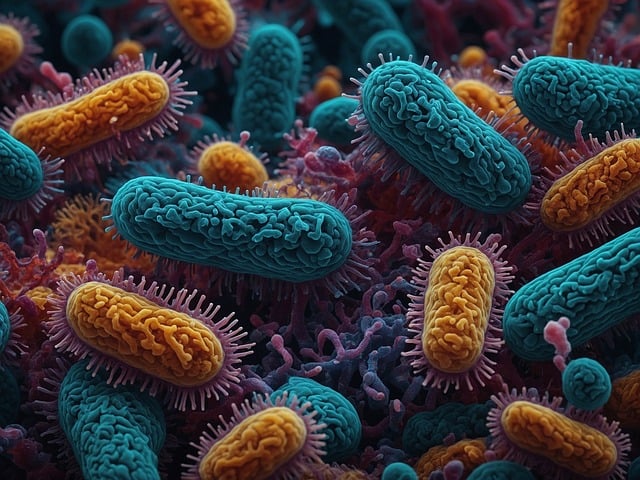While most bacteria multiply by binary fission where each cell splits into two identical daughter cells, Corynebacterium matruchotii, found in abundance in your mouth, produces up to 14 daughter cells every time it divides through a process called multiple fission[1]. To put this into perspective, the ‘descendants’ of a single C. matruchotii cell, doubling every 12.83 hours, would by far exceed the global human population (around 8.2 billion) within 9 generations, reaching over 20 billion bacteria in under 5 days[2]. This is not a reminder to brush your teeth twice a day, but a journey into the mysteries held within an unexpectedly wondrous bacterial ecosystem.
C. matruchotti’s cell division begins with massive extension from a single point, almost like a growing plant shoot, to a length several times larger than than its starting size[3]. Although Streptomyces bacteria elongate in a similar way before cell division, C. matruchotti takes one of the top places in the bacterial world for fastest elongation[4]. This enormously long cell will break up into an average of 7 (and up to 14) new daughter cells, each subsequently undergoing division. While multiple fission usually produces inactive spores, C. matruchotti takes another award for the largest number of active daughter cells produced in one cell division[1]. Considering all the processes necessary to achieve cell division, from DNA replication to provide each new cell with a copy of the parent chromosome, to construction of new sections of the cell wall, the production of such a large number of daughter cells is truly a remarkable achievement[4][5].
And the function of such a unique organism living in your mouth? Simply an adaptation to survive the never-ending war between bacterium and toothbrush? Well, there’s more to C. matruchotti’s rapid multiplication than that, as it forms the foundation of the oral microbiome, the community of bacteria living in the mouth[6].
The thought of a lush, diverse ecosystem likely conjures up the image of a rainforest, not the oral microbiome. But in fact, being home to over 500 species of bacteria, your mouth is a microscopic rainforest itself[6]. And the cornerstone of this forest is C. matruchotti, fulfilling a role similar to trees building the ecosystem. It’s rapid multiplication not only builds biofilms (sheets of bacteria anchored to surfaces of the mouth) that will form the habitat for countless other species, but also extends and explores the territory of this microbial forest[6].
So the next time you brush your teeth, think of how sometimes, the most wonderful, unexpected discoveries are closer than you may think.
[1] https://www.sciencenews.org/article/bacteria-unique-mouth-division
[2] https://doi.org/10.1128/msystems.00115-23
[3] https://pnas.org/doi/10.1073/pnas.2408654121(abstract)
[4] https://onlinelibrary.wiley.com/doi/10.1111/j.1365-2958.2004.04283.x
[5]https://cals.cornell.edu/microbiology/research/active-research-labs/angert-lab/epulopiscium/binary-fission-and-other-forms-reproduction-bacteria.
[6]https://www.mbl.edu/news/open-wide-human-mouth-bacteria-reproduce-through-rare-form-cell-division
Edited by Daisy Lints and Hazel Imrie
Copyedited by Cameron McKeddie

